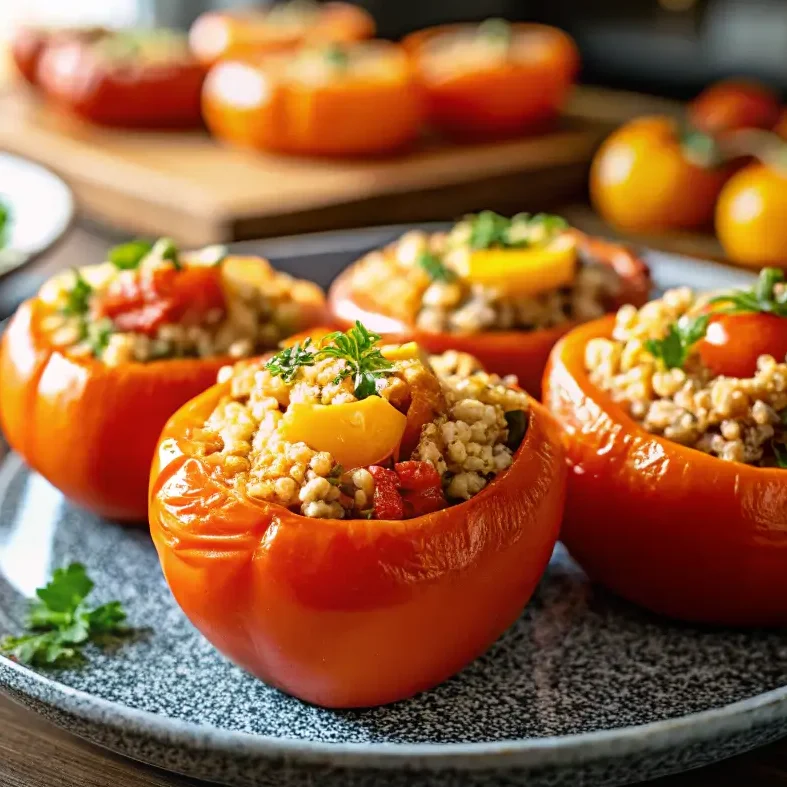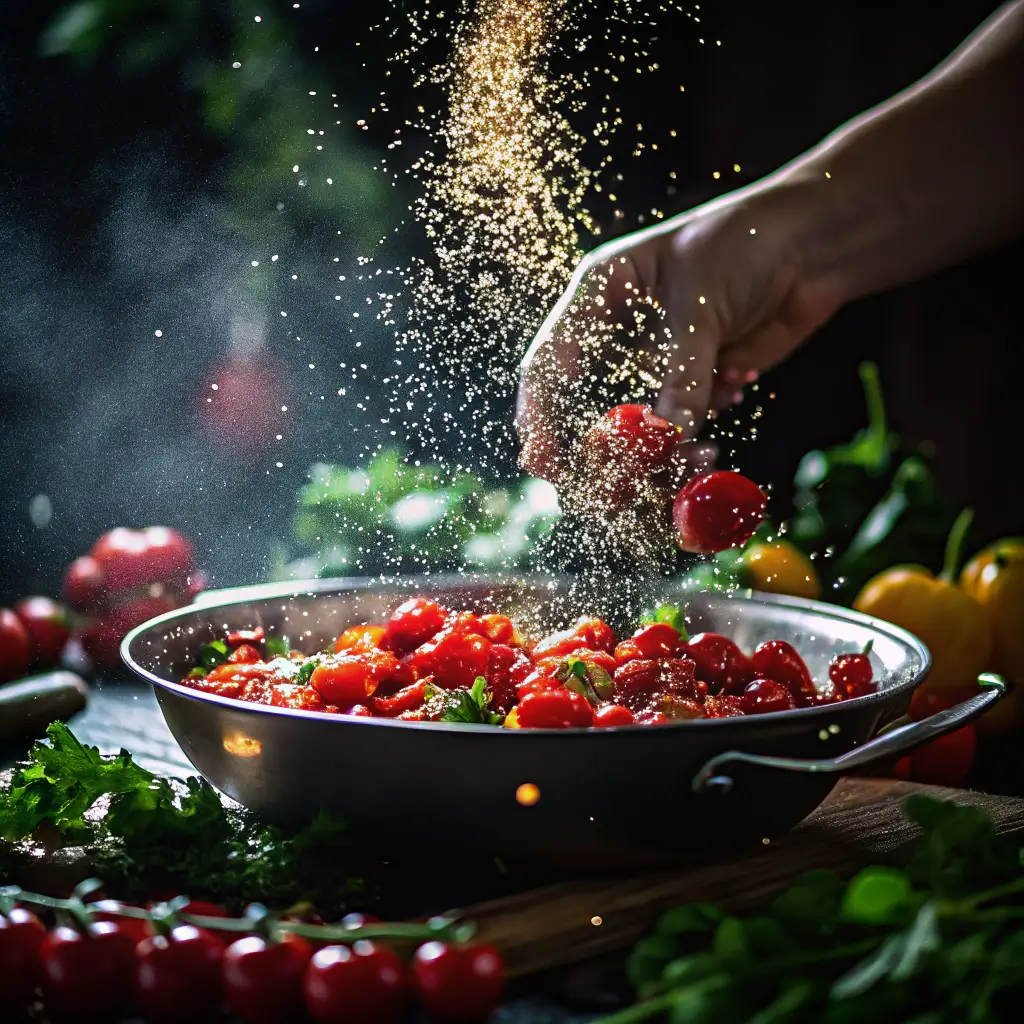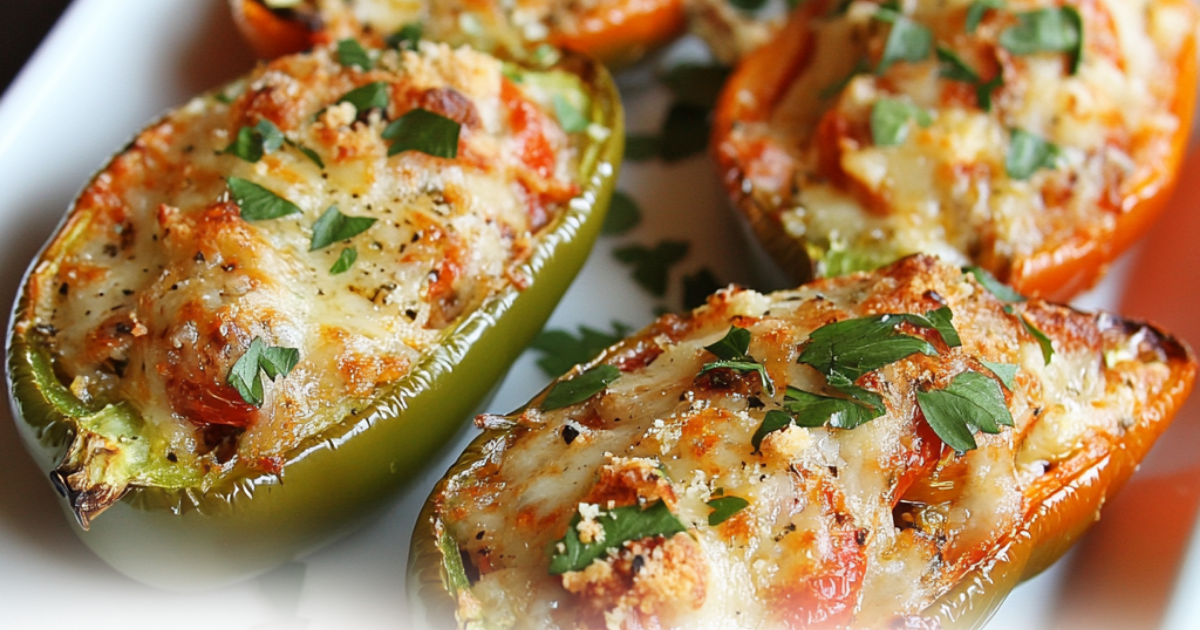Cooking peppers while keeping their delightful crunchiness can feel like an art form. If you’ve ever wondered, “How do you cook peppers and keep them crunchy?”, you’re not alone. This question comes up often, and for a good reason—preserving that irresistible crispness requires the right approach. In this article, we’ll explore everything you need to know about keeping peppers firm, from selecting the best varieties to using foolproof cooking techniques. Whether you’re sautéing, pickling, or stir-frying, mastering how to cook peppers and keep them crunchy is easier than you think. Let’s dive in and unlock the secrets to perfectly crispy peppers!

Table of contents
Introduction to How to Cook Peppers and Keep Them Crunchy
Why It’s Important to Keep Peppers Crunchy
Peppers are more than just a vibrant addition to your plate; their crunchiness adds a delightful texture to countless dishes. From salads to stir-fries, that satisfying bite takes any recipe to the next level. However, achieving that perfect crunch can be tricky. Peppers often lose their structure when overcooked or improperly stored. Understanding why this happens is the first step toward retaining their texture.

Challenges in Cooking Peppers Without Losing Their Crunch
So, why do peppers sometimes go limp? The problem lies in their water content and cell structure. Peppers are made up of water-filled cells, which can collapse under prolonged heat, leaving them soft and soggy. Improper handling, such as over-salting or cooking at the wrong temperature, can also play a role. But don’t fret—this article will guide you through proven tips and tricks to keep your peppers crispy and delicious.
Stay tuned as we explore the best cooking methods, storage hacks, and recipe ideas for crunchy peppers!
Choosing the Best Peppers to Stay Crunchy
Which Pepper Varieties Are Best for Crunchiness?
When it comes to cooking peppers and keeping them crunchy, choosing the right variety is half the battle. Bell peppers are a popular choice because of their thick walls, which help retain a firm texture during cooking. Green bell peppers, in particular, tend to stay crisp longer due to their lower sugar content. Sweet mini peppers, on the other hand, are great for quick sautés because they combine crunch with a burst of sweetness.

If you’re working with thinner varieties like banana peppers or shishito peppers, don’t worry! They can still maintain their texture if handled correctly. These peppers cook quickly, so using a flash-cooking method is key to avoiding sogginess.
How to Select Fresh Peppers That Stay Crunchy
The freshness of your peppers plays a huge role in preserving their crunch. Always look for peppers with firm skins, bright colors, and no wrinkles. A fresh pepper should feel heavy for its size, indicating it’s packed with water. Avoid any with soft spots or dull appearances—these are signs of age and potential sogginess.
Storing your peppers properly before cooking is equally important. Keep them in the refrigerator’s crisper drawer, ideally in a breathable bag, to retain their moisture. Fresh, well-stored peppers cook better and are more likely to stay crunchy.
Understanding your pepper variety and ensuring freshness will give you a head start in answering, “How do you cook peppers and keep them crunchy?”.
Cooking Peppers Without Losing Their Crunch
Quick Sautéing to Keep Peppers Crunchy
Sautéing is one of the simplest ways to cook peppers while retaining their crunch. Start by heating a small amount of oil in a pan over medium-high heat. Once the oil is hot, toss in your sliced or chopped peppers. Stir continuously to prevent overcooking, and aim for no more than 3-5 minutes. This quick process softens the edges while keeping the centers crisp.

For even better results, sprinkle a pinch of salt after cooking instead of during. Salt draws out moisture, which can make your peppers soggy if added too early. A quick sauté is perfect for adding crunchy peppers to tacos, fajitas, or grain bowls.
Blanching Tips to Maintain Pepper Texture
Blanching is a game-changer when you want your peppers to stay crisp, especially in recipes like stir-fries or salads. To blanch, boil a pot of water and prepare a bowl of ice water on the side. Drop your sliced peppers into the boiling water for about 60 seconds, then transfer them immediately to the ice bath. This method stops the cooking process instantly, locking in that fresh crunch.
Blanched peppers are ideal for meals where a slightly tender but firm texture is key. They also retain their bright color, making your dishes visually appealing.
How Stir-Frying Keeps Peppers Firm and Crunchy
Stir-frying is a quick, high-heat cooking method that works wonders for peppers. The secret is to cut your peppers into even-sized pieces so they cook uniformly. Add them to the wok or pan during the last 2-3 minutes of cooking. This ensures they don’t soften too much while blending beautifully with other ingredients.
Using sesame oil or soy sauce can enhance flavor without compromising texture. Remember to keep the heat high and your movements quick—this is key to keeping your peppers crunchy.
Using Air Fryers to Cook Peppers Without Softening Them
If you’re looking for an easy, mess-free way to cook peppers, an air fryer might be your best bet. Toss sliced peppers with a little olive oil and seasoning, then air fry them at 375°F for 5-7 minutes. The circulating heat crisps up the outside while leaving the insides firm. It’s a great option for creating crunchy sides or topping dishes like pasta or salads.
With these methods, you can confidently answer, “How do you cook peppers and keep them crunchy?” while impressing everyone at the table!
Preserving Peppers’ Crunch in Pickling
Essential Brining Techniques
Pickling is a fantastic way to preserve the crunchiness of peppers while infusing them with tangy flavors. The secret lies in creating the right brine. A simple brine includes water, vinegar, and salt, but for an extra crisp bite, adding a pinch of calcium chloride (commonly known as pickle crisp) works wonders. Bring the brine to a boil to dissolve the salt completely, then let it cool before pouring it over the peppers.
Make sure your peppers are clean, firm, and free of blemishes before pickling. Slicing them into rings or leaving them whole depends on how you plan to use them, but smaller cuts absorb the brine more quickly, ensuring a perfect crunch.
Common Additives to Keep Peppers Firm
Beyond calcium chloride, spices like mustard seeds, peppercorns, and dill can enhance the flavor of pickled peppers without compromising their texture. To prevent softening, avoid using iodized salt, as it can discolor and break down the peppers’ cell walls. Always use pickling or kosher salt for the best results.
Another trick is to blanch the peppers briefly before pickling. This process helps lock in their natural crispness and creates a vibrant appearance. Place your peppers in jars with enough space for the brine to flow evenly, ensuring every piece stays submerged.
How Long to Pickle Without Losing Crunch
Timing is crucial in pickling. Peppers achieve their peak crunchiness after sitting in the brine for 24-48 hours in the refrigerator. For a longer shelf life, canning pickled peppers is an excellent option, but the process requires extra care to maintain their crunch. Be cautious during heat processing—overdoing it can soften the peppers.
Storage Tips for Fresh and Cooked Peppers
Proper Ways to Store Fresh Peppers
Storing fresh peppers correctly can make a big difference in maintaining their crunch when it’s time to cook. Fresh peppers thrive in cool, slightly humid conditions, making your refrigerator’s crisper drawer the best spot. Wrap them loosely in a breathable plastic bag or paper towel to reduce moisture loss. However, avoid sealing them tightly, as excess humidity can lead to mold or softening.
It’s also a good idea to keep peppers away from fruits like bananas or apples. These produce ethylene gas, which can accelerate the ripening process and cause peppers to lose their firmness.
Best Practices for Storing Cooked Peppers
Cooked peppers, especially those you want to stay crisp, should be cooled quickly before storage. Place them in an airtight container and store them in the refrigerator for up to three days. To keep them from becoming soggy, lay a paper towel at the bottom of the container to absorb any excess moisture.
For longer storage, freezing is an option, but it’s essential to blanch the peppers first. This step helps preserve their texture and vibrant color. When you’re ready to use frozen peppers, cook them directly from frozen to prevent water loss during thawing.
With these tips, you can confidently store both fresh and cooked peppers, keeping them ready for use in any dish. For more delicious recipes and kitchen hacks, explore Why are my stuffed peppers watery
Advanced Techniques for Crunchy Peppers in Recipes
Pairing Peppers with Crunchy Ingredients
Cooking peppers to perfection is one thing, but pairing them with other crunchy ingredients takes your dish to the next level. Consider combining peppers with nuts like almonds or cashews in stir-fries. The contrast between the sweet crunch of peppers and the nuttiness creates a flavorful balance. Adding fresh vegetables like cucumbers or snap peas in salads can also amplify the overall crispiness of your meal.
For hot dishes, think about using toasted breadcrumbs or crispy fried onions as toppings. They not only enhance the texture but also add a savory element that complements the natural sweetness of peppers.
Creative Recipe Ideas to Showcase Crunchiness
When peppers retain their crunch, they shine in a variety of recipes. Try stuffed bell peppers with quinoa and roasted chickpeas for a filling, texture-packed meal. For something lighter, use blanched strips of red and yellow peppers as edible scoops for creamy dips like hummus or tzatziki.
Peppers are also perfect for Asian-inspired dishes. Toss them into a quick stir-fry with tofu or thinly sliced beef, finishing with a drizzle of soy sauce and sesame oil. The combination of crispy veggies and tender protein will leave everyone asking, “How do you cook peppers and keep them crunchy?”
For more recipe inspiration, visit Zenarecipes and explore creative ways to incorporate peppers into your meals.
FAQs on Cooking Peppers and Keeping Them Crunchy
Why Do Peppers Lose Their Crunch When Cooked?
Peppers lose their crunch primarily due to prolonged exposure to heat. High water content causes their cell walls to break down when overcooked, leaving them limp. To avoid this, use quick-cooking methods like stir-frying or blanching, which help retain their natural crispness.
How Can I Ensure My Peppers Stay Crunchy in Salads?
To keep peppers crunchy in salads, slice them just before serving to preserve their freshness. For an added crisp boost, soak the slices in ice water for 10 minutes before adding them to the salad. This step rehydrates the cells and gives them a firmer texture.
What Are the Best Cooking Tools for Preserving Pepper Texture?
The right tools can make all the difference. A wok for stir-frying, a high-quality air fryer, or a blanching pot are excellent options for maintaining pepper texture. Each allows you to apply just the right amount of heat without overcooking.

